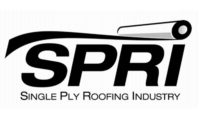Retrofit Roof Drain Standard Re-Approved
America’s first national standard for retrofit roof drains, developed by SPRI in 2004, was re-approved by the American National Standards Institute (ANSI).
WALTHAM, Mass. - America’s first national standard for retrofit roof drains, developed by SPRI in 2004, was re-approved by the American National Standards Institute (ANSI). The revised RD-1 standard was re-approved as required by ANSI’s policy that all National Standards be re-evaluated every five years. The standard is designated ANSI/SPRI RD-1, 2004, “Standard for Retrofit Roof Drains.”
SPRI, the association representing sheet membrane and component suppliers to the commercial roofing industry, developed this roof drain standard to fill the information void regarding retrofit drains.
“Retrofit drains that meet this standard have proven to perform at the high level demanded by designers and building owners,” said Stan Choiniere, task force chairman of SPRI’s Retrofit Roof Drain Standard Task Force.
The main differences between retrofit drains and new ones, Choiniere noted, stem from the need to place them where existing drains already are installed. This means that capacities must be checked and the connection to existing plumbing must be leak-free.
Retrofit drains, by their very nature, have smaller drainage diameter than the original drains because they must fit inside the existing plumbing. Ensuring sufficient capacity depends upon the retrofit drain diameter, the number of drain sites and the rainfall expectations for the building location.
Therefore, the retrofit roof standard, ANSI/SPRI RD-1, features a test protocol designed to assure a leak-free connection to existing piping. Also included are methods intended to calculate sufficient drainage. An rainfall rate map of the continental United States shows maximum one-hour rainfall values with a 100-year return rate. For more information on this standard, contact SPRI headquarters at info@spri or call 781-647-7026.
WALTHAM, Mass. - America’s first national standard for retrofit roof drains, developed by SPRI in 2004, was re-approved by the American National Standards Institute (ANSI). The revised RD-1 standard was re-approved as required by ANSI’s policy that all National Standards be re-evaluated every five years. The standard is designated ANSI/SPRI RD-1, 2004, “Standard for Retrofit Roof Drains.”
SPRI, the association representing sheet membrane and component suppliers to the commercial roofing industry, developed this roof drain standard to fill the information void regarding retrofit drains.
“Retrofit drains that meet this standard have proven to perform at the high level demanded by designers and building owners,” said Stan Choiniere, task force chairman of SPRI’s Retrofit Roof Drain Standard Task Force.
The main differences between retrofit drains and new ones, Choiniere noted, stem from the need to place them where existing drains already are installed. This means that capacities must be checked and the connection to existing plumbing must be leak-free.
Retrofit drains, by their very nature, have smaller drainage diameter than the original drains because they must fit inside the existing plumbing. Ensuring sufficient capacity depends upon the retrofit drain diameter, the number of drain sites and the rainfall expectations for the building location.
Therefore, the retrofit roof standard, ANSI/SPRI RD-1, features a test protocol designed to assure a leak-free connection to existing piping. Also included are methods intended to calculate sufficient drainage. An rainfall rate map of the continental United States shows maximum one-hour rainfall values with a 100-year return rate. For more information on this standard, contact SPRI headquarters at info@spri or call 781-647-7026.
Looking for a reprint of this article?
From high-res PDFs to custom plaques, order your copy today!




